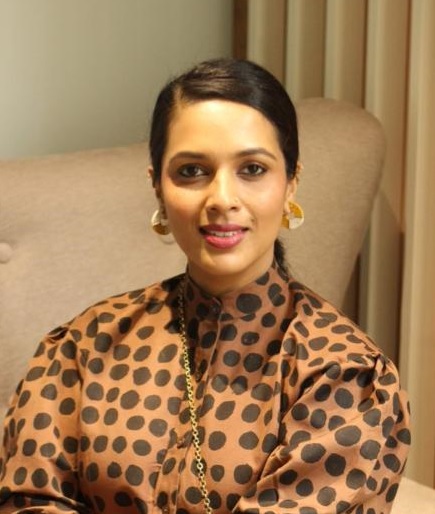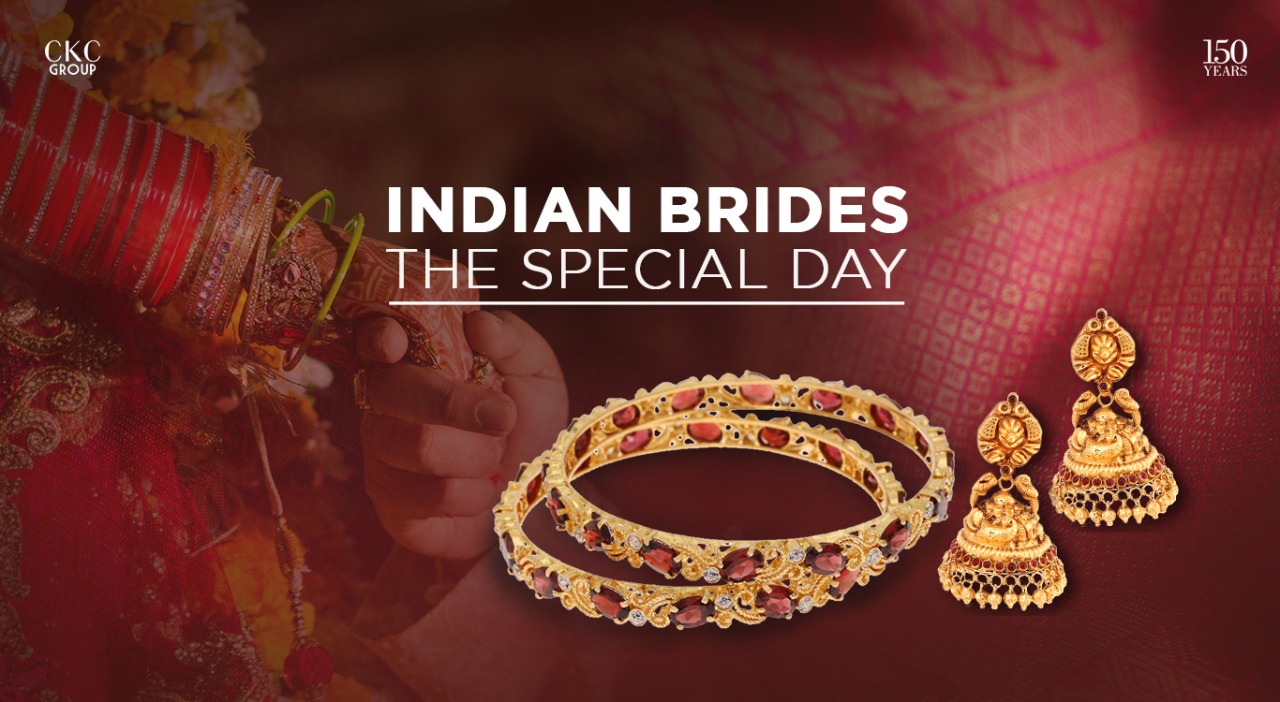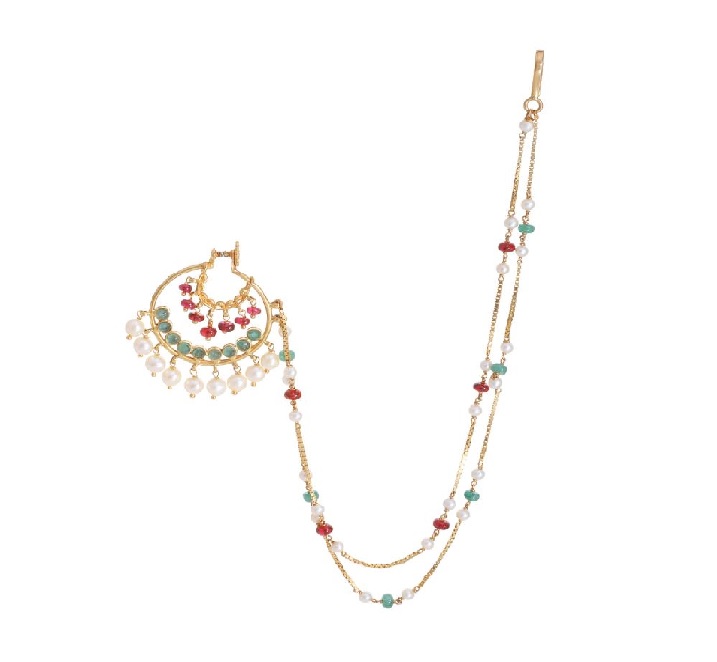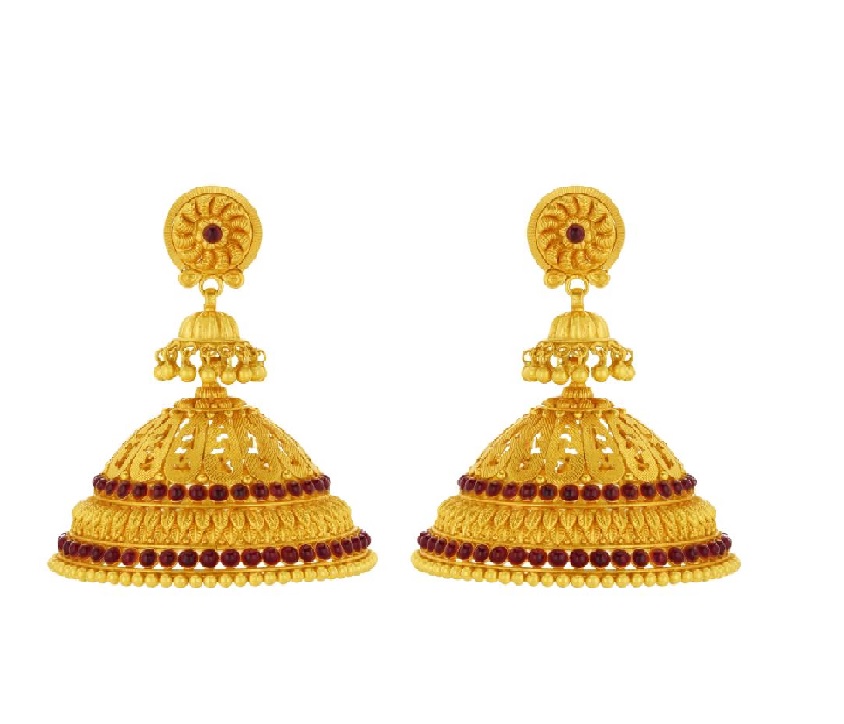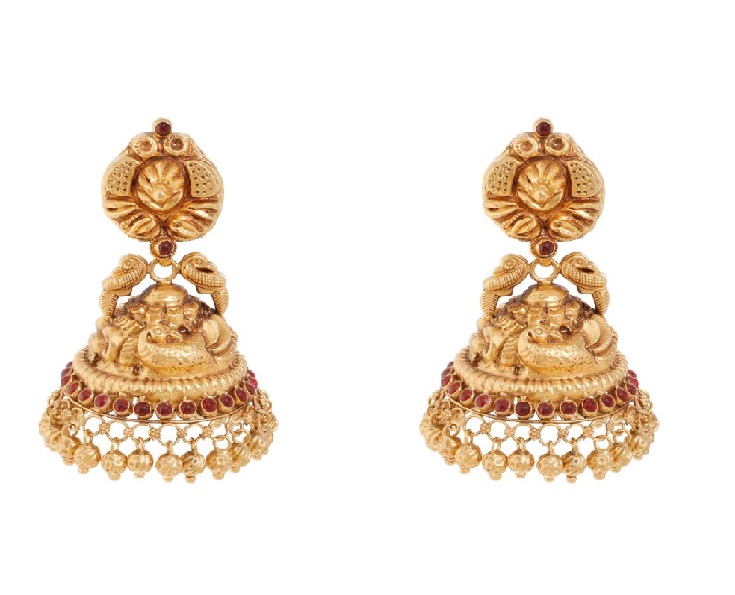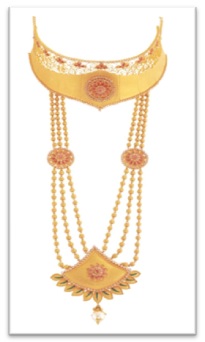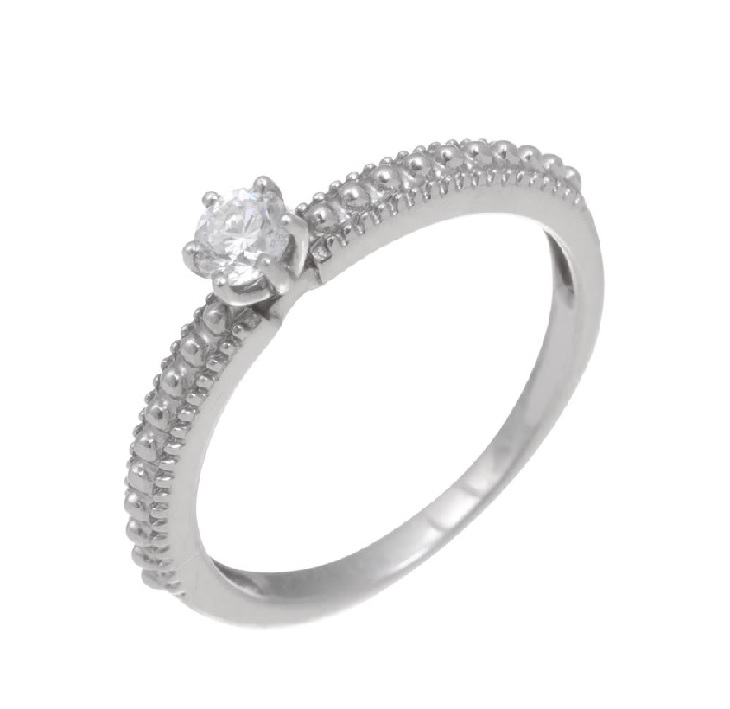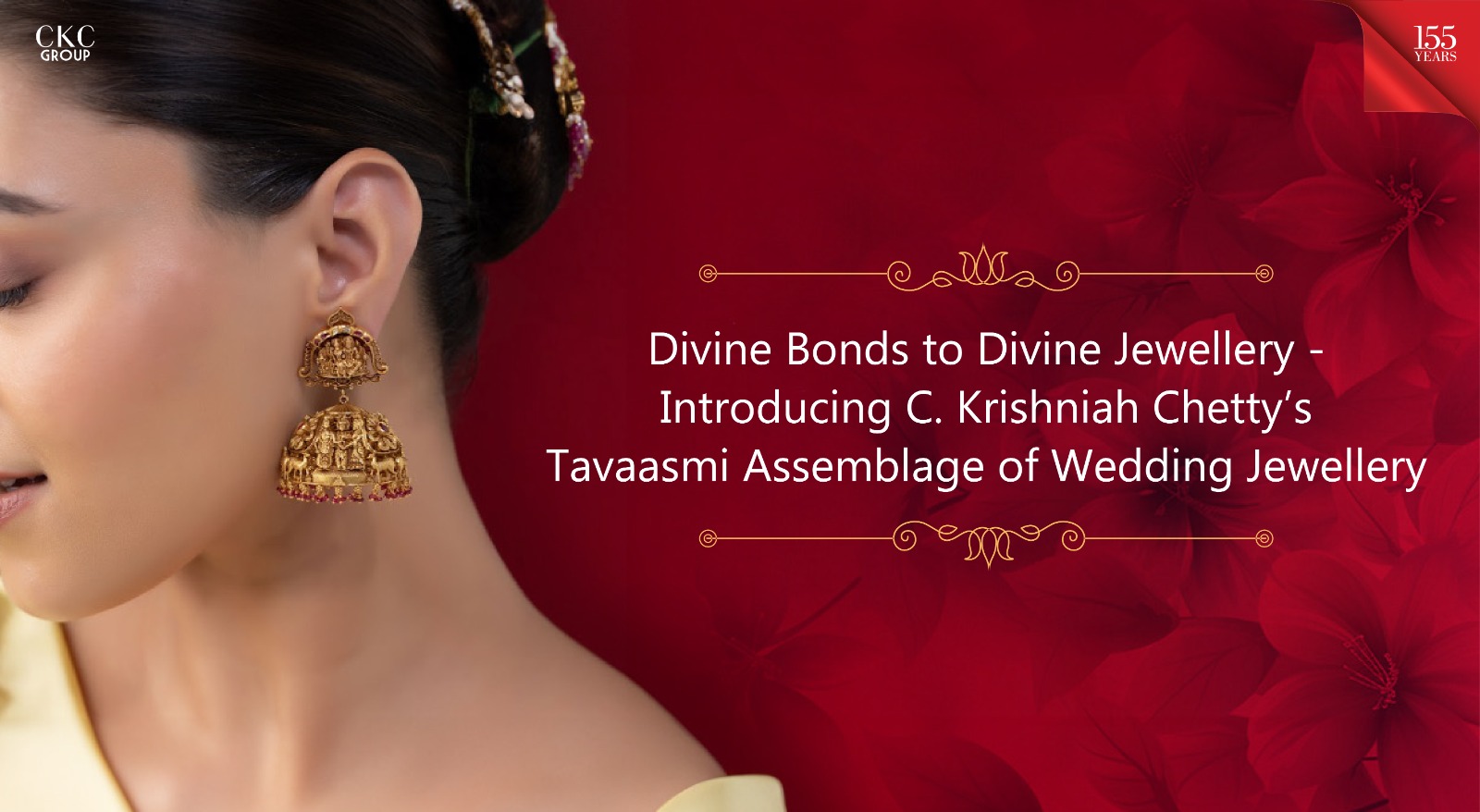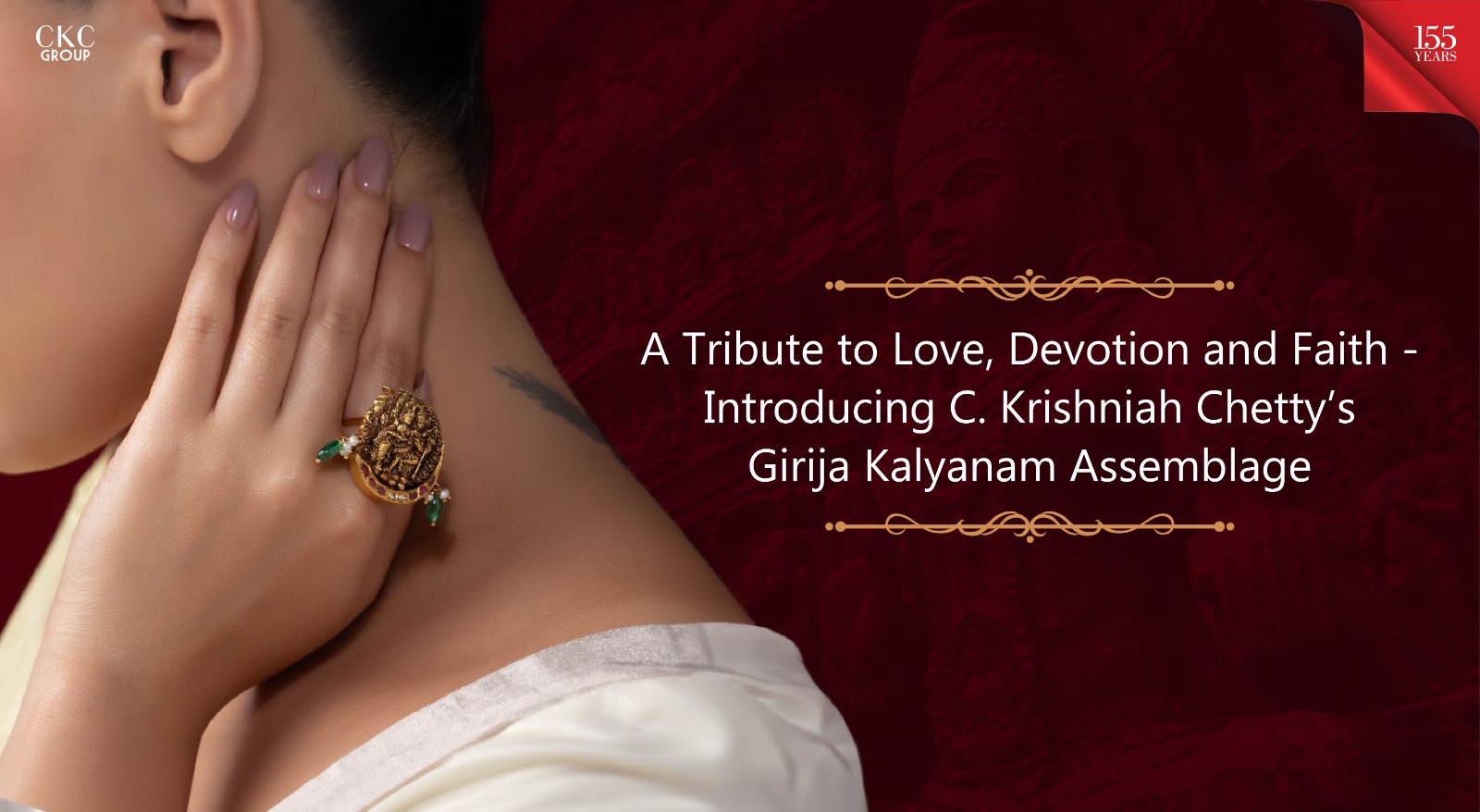Indian Brides – The Special Day
As a little girl watches “Cinderella”, suddenly she begins to dream of a happily ever after; the day her Prince Charming would sweep her off her feet while she donned a white princess-y gown and the best diamond tiara in the world.
Such movies might seem fiction, but the stories aren’t. While white gowns and tiaras might not be the best fit for a bride in every culture, every bride is perfect on her wedding day. From her attire to her jewellery, everything speaks a sweet melody, and plays a great role in making the day of the wedding, the best day of a woman’s life – exactly what C. Krishniah Chetty Jewellers hope to achieve.
The Hindu Bride
Conventionally wearing a gorgeous red saaree or lehenga, many aspects of a hindu bride’s attire are symbolic. While red is thought to represent Mars, the planet in charge of marriages, the Maang Tikka she wears in the middle of her forehead depicts the third eye.
After carefully draping her saaree or changing into her gorgeous Lehenga Choli, the next stop is the most admired one: wearing jewellery, especially the Nathni and Jhumkis.
Nathni
A tribute to the Goddess Parvati, the Nathni is a symbol of a married woman –worn from the wedding day until the marriage lasts.
The traditional nathni or nath, is in the form of a nose ring, with a string attached to the ear. While it might appear heavy, it seldom is. A major plus in such jewellery is the amount of colors it includes to match all sorts of dresses. Whether your bridal dress has pearl work, or is embellished the green sequins, this classic gold nathni accentuates the dress and adds color to an otherwise pale face of a bride getting cold feet!
However, if you are someone like me with a slimmer face and a rather large nose, a big nose ring might not suit you well. Thus, I chose to go for a diamond nose pin on my special day, while nose screws are also another good option.
Jhumki
Those casual 2-dome shaped earrings that you see women of all backgrounds wearing fashionably today, are actually a rendition of the gorgeous jhumkis of the traditional Hindu bride. Representing heavy gold earrings. The jhumkis add a playful vibe to the bride, and certainly are my favorite jewellery item to wear everywhere.
For a classic and royal vibe, these gold jhumkis with hints of red beads appear absolutely breathtaking.
While someone like me who isn’t a big fan of all-gold, shall go for these gorgeous vintage styled jhumkis with red and gold beads. Plus point: you can wear these jhumkis with a plain suit and embroidered dupatta, and stun next Diwali!
The Punjabi Bride
A different and laid-back bride indeed, the Punjabi bride stays true to her roots even with her choice of bridal wear. Wearing a red, heavy shalwar kameez, the bride seems like she will break into a bhangra move any moment (and she might just!). Another recent popular choice of attire has become the lehenga too.
What sets the Punjabi bride apart from others is her Chura. Traditionally made with ivory, today the Chura represents plastic bangles in white and dark red, and usually in sets of 4. The bride usually wears her chura until 40 days post-marriage, to depict love and happiness.
Luckily, with C. Krishniah Chetty’s bangle collection, you can glam up your chura by some replacements with gold bangles.
If you saw Deepika’s gorgeous yet subtle chura, you can present yours with a twist. Replace the middle white bangle with a beautiful all-gold hollowed bangle.
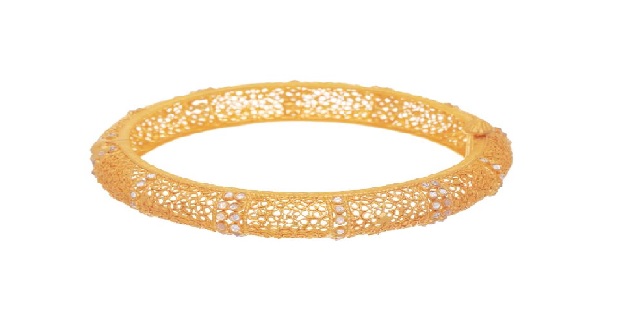
Or you can replace the ends with a pair of classic gold and red bangles from the C. Krishniah Chetty Collection.
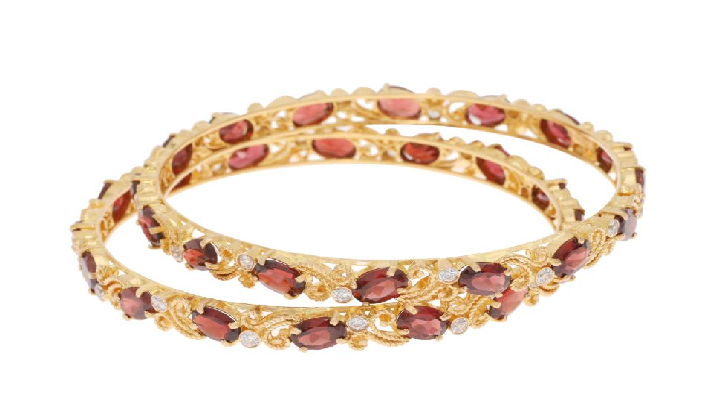
The Tamilian Bride
The South Indian or Tamil brides present a very different sight. Decked from tip to toe in gold, looking at a Tamil bride brings one word to mind: Royalty.
Choker and Mala
A usual sight in such brides, the woman dons a heavy neckpiece. Covering the neck with a choker in classic gold, a heavy gold pendant may hang long from the choker. Or it might be replaced by strings of pearl, or a combination of both.
As Malas came into trend yet again, I searched for such gorgeous yet easy neckpieces to wear and my heart lit up at the sight of this classic gold necklace
Extravagant yet subtle, it certainly emits a royal vibe, doesn’t it?
Vodyanam: The Tamil bride wears a beautiful, vibrantly-hued saaree on her big day. Creatively, it is paired with a gold waist belt/chain called Vodyanam. Another gold item to add to the long list of jewellery, this certainly makes the bride stand out of the ordinary and shine (pun intended). Thankfully, C. Krishniah Chetty Jewellers store this too, so you don’t have to go searching for a must-have in your South Indian wedding.
The Assamese Bride
For natives of Assam, the Assamese wedding is very minimalized as compared to other regions of India. Traditionally, the brides donned the Mekhela Chador on the wedding day, gifted by the groom’s mother, and draped in the form of a silk saree with embellishments and work of gold and silver. Yet, the jewels are the shine of the bride, and the jewellery of an Assamese Bride is fairly traditional and minimal, coupled with subtle makeup. However, what an Assamese Bride must do on her big day, is the Maang Teeka.
Considered auspicious for the bride, the maang teeka rests beautifully in the middle of the forehead, and is thought to enhance the concentrative abilities of the wearer, especially allowing them to gain control over their emotions.
Conventional brides opt for the single and subtle styled maang tikka. The original maang tikka, this mesmerizing Kundalavelai Gold Head Ornament is the perfect jewel for the Assamese bride who believes in the less is more ideology. On the other hand, many brides of today have amped up the tikka to a glorious jhoomar (chandelier-styled jewel) lining the side of their head, accompanied by a thin maang tikka.
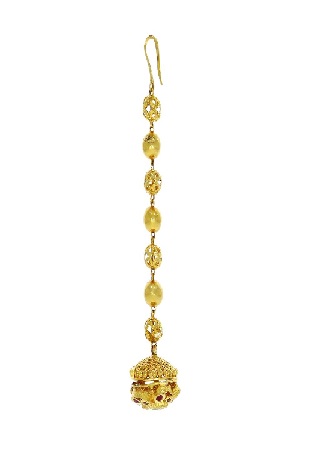
The Parsi Bride
Vastly different from the other hindu communities, the wedding in a Parsi family is more westernized than usual. Resembling a Christian wedding, the couple usually dons an all-white outfit. Yet, unlike a Christian wedding, the bride opts for a white saaree or lehenga choli instead of a white veiled gown, while she covers her head with the saaree’spallu.
While the change of times and trends may have reduced the covering of the head, the jewels remain the same; platinum, diamond, and gorgeous white pearls.
The Classic Diamond Ring
Diamonds are a girl’s best friend, and the Parsis certainly agree. Opting for minimal yet classic jewellery, the wedding ring is a classic solitaire that easily slides onto the bride’s finger as a proclamation of love for all to witness.
As my love for solitaires and learning cultural jewellery trends got the best of me, I found the perfect classic diamond platinum ring in the C. Krishniah Chetty Collection. Subtle yet classic – it is exactly what is desired.
Classic Pendants
With slightly deep necks and a westernized outlook, the Parsi bride opts for a change from traditional heavy gold jewellery, and instead goes for elegant pendants instead. While the usual ones are pearl-laden, I liked ones with pops of color to break in the all-white routine. For this purpose, the classic diamond pendant from the C. Krishniah Chetty Collection with hints of champagne and a unique shape immediately stole my gaze.
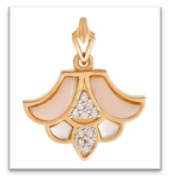
If you are a Parsi bride with you wedding due soon, break the white with colorful pendants such as these, and let you, and your jewels shine on your special day!
To uphold culture and tradition on your big day, shop from C. Krishniah Chetty and make your wedding day, the best day of your life.
Curated by Yagnika C. Cotha
